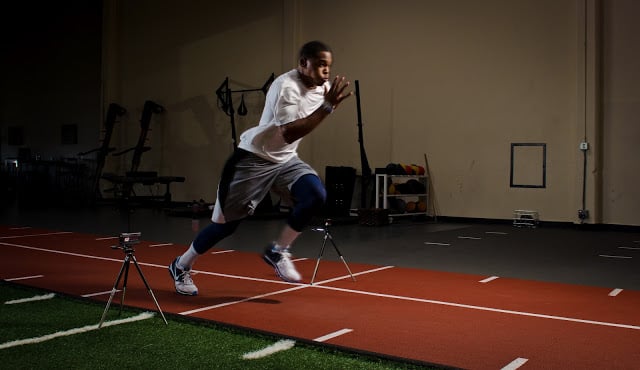
My biggest criticism from our athletes’ coaches is that our training and nutritional recommendations make athletes lose weight and this appearance is often mistaken for weakness. The goal of all athletes’ programs should be to improve their relative strength, strength in relation to their body weight.
Just picture two different athletes who possess the same level of lower body strength. However, one of the athletes is 10 pounds heavier, causing a slightly greater burden to accelerate out of a sprint start or decelerate this heavier weight when changing direction on the field or court. A 2010 study out of the United States Military Academy in West Point studied 61 collegiate football players and their 20 yard sprint performance, as well as their strength performance on the squat and power clean. The research found that the athletes with greater strength levels, relative to their body mass, had faster sprint times.
However, this principle of higher relative strength to increase speed must be approached with caution. Every attempt to decrease body weight by lowering fat carries the risk of muscle loss, which can detract from strength levels. Unfortunately, there is no exact formula of the ideal body composition, or how much body fat % allows the best performance in a certain event. The answer is that each individual possesses a specific makeup that will allow him/her to perform at the optimum level. There are a variety of factors that determine an individual’s ideal composition, ranging from gender to ethnicity.
Don’t get me wrong, we’re not training football players to be models or figure competitors. The solution should be to find the body weight that allows you to possess the highest strength levels. For example, with respect to the individuality of strength mentioned above, offensive linemen tend to exert their best strength performances at higher body fat compositions than our running backs.
At Sparta, we use training programs that progress according to relative body weight strength rather than the traditional 1 repetition max (1 RM). This method allows us to remain focused on the ultimate goal of relative strength rather than absolute strength, the maximum force an athlete can exert irrespective of body size.
If you don’t believe me, just take a look at the evolution of sports over the last decade. The days of Shaq dominating the key due to sheer size are over. Football linemen are getting more agile as more spread offenses develop. Tim Lincecum is throwing as hard as CC Sabathia, weighing 100 pounds less. The list goes on, and you can either get onboard with more relative strength or continue to ignore your body weight to stress absolute strength.